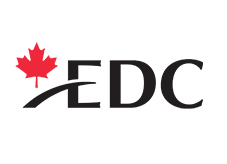Designing your win-loss program interview guide
This six-part series explores how a win-loss analysis program can help you improve close rates, better serve your customers and keep a pulse on competitors. We look at how to build a win-loss program, institute best practices and leverage the results.
Once you’ve completed the discovery process and collected input from your key stakeholders, it’s time to design your win-loss program interview guide. This question-writing activity is vital. While interviews should be organic and free-flowing, asking a specific set of core questions during each interview enables you to easily compare data over time and draw out trends.
Focus on questions that will capture the essence of your stakeholders’ learning objectives. Design the guide with the goal of gathering insights aligned with the program needs and objectives gathered during the discovery process. In order to let the respondents be the experts on their own experiences, pose open-ended questions. Closed questions create a limited focus, which can often result in too narrow an answer.
When creating this guide, consider again the four core functions your win-loss research will support. Use the examples below to kick-start your writing.
Product marketing
Key areas include perception before and after the buying process, key influencers, and analyst or consultant impact.
- Coming into the evaluation, what was your perception of us?
- Where do you go for advice, knowledge or inspiration in general?
- Which of our materials was most and the least helpful?
Product management
Key areas include product-to-vision match, and information about product gaps and opportunities for further development.
- What are our greatest solution or product benefits?
- What are our biggest gaps?
- Are we behind or ahead of the competition?
Competitive intelligence
Key areas include asking how competitors and their sales teams are positioned against your company, and how you are positioned against them.
- Who else did you evaluate?
- What were the strengths and weaknesses of each company?
- What was the one thing that tipped the scale?
Sales
Key areas include your sales team’s responsiveness and their ability to align the solution with the customer’s needs and vision.
- How was your overall sales experience?
- What could we have done better?
- How did our sales team differ from the competition?
Once you’ve built your interview guide, give internal stakeholders time to review and approve the questions. The more eyes you have on the document, the better the chance you have of collecting the most sought-after intelligence.
Pro tip
Use an online survey prior to interviews: Build an online survey to correspond with and inform your interviews. The survey can be sent to an interviewee as a way to collect information in preparation for the interview. The questions in this survey will help generate a set of scores and rankings that can be monitored over time in areas such as product, competition, price, and sales experience.


